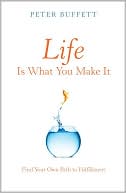Art of Deception: An Introduction to Critical Thinking
Can you tell when you're being deceived?\ This classic work on critical thinking — now fully updated and revised — uses a novel approach to teach the basics of informal logic. On the assumption that "it takes one to know one," the authors have written the book from the point of view of someone who wishes to deceive, mislead, or manipulate others. Having mastered the art of deception, readers will then be able to detect the misuse or abuse of logic when they encounter it in others — whether in...
Search in google:
This classic work on critical thinking-now fully updated and revised-uses a novel approach to teach the basics of informal logic. On the assumption that "it takes one to know one," the authors have written the book from the point of view of someone who wishes to deceive, mislead, or manipulate others. Having mastered the art of deception, readers will then be able to detect the misuse or abuse of logic when they encounter it in others-whether in a heated political debate or while trying to evaluate the claims of a persuasive sales person. Using a host of real-world examples, the authors show you how to win an argument, defend a case, recognize a fallacy, see through deception, persuade a skeptic, and turn defeat into victory. Not only do they discuss the fundamentals of logic (premises, conclusions, syllogisms, common fallacies, etc.), but they also consider important related issues often encountered in face-to-face debates, such as gaining a sympathetic audience, responding to audience reaction, using nonverbal devices, clearly presenting the facts, refutation, and driving home a concluding argument. Whether you're preparing for law school or you just want to become more adept at making your points and analyzing others' arguments, The Art of Deception will give you the intellectual tools to become a more effective thinker and speaker. Helpful exercises and discussion questions are also included.
Preface 7Introduction 11What Is Logic? 11What Is an Argument? 15When Is an Argument Acceptable? 18Summary and Exercises 21Identifying Arguments 23Arguments 23Difficulties in Identifying Arguments 23Grammar, Punctuation, and Reading Comprehension 24Rules for Identifying Premises and Conclusions 27Summary and Exercises 34Formal Analysis of Arguments 37The Ideal of Logic 37Syllogisms 39Rules for Valid Syllogisms 44Soundness and Informal Logic 48Summary and Exercises 50Presenting Your Case 55Gaining a Sympathetic Audience 58Presenting the Facts 69Driving Home the Conclusion 94Nonverbal Devices 99Advertising as a Case Study 101Summary and Exercises 108Attacking an Argument 111Audience Reaction 111Anatomy of Refutation 117Attacking the Conclusion 142Face-to-Face Debate 151Summary and Exercises 155Defending Your Case 159Counterattack 163Winning the Argument 180Going for a Tie 186Summary and Exercises 188Cause-and-Effect Reasoning 191History of the Concept of "Causation" 191Hume's Definition of Cause and Effect 194Causal Reasoning as Practical 196Mill's Methods 199Fallacies of Causal Reasoning 203Problems with the Concept of "Causation" 210Summary and Exercises 215Appendix 219Critical Reading Skills 219Review Exercises 257Some Suggestions for Further Reading 263Index 265








